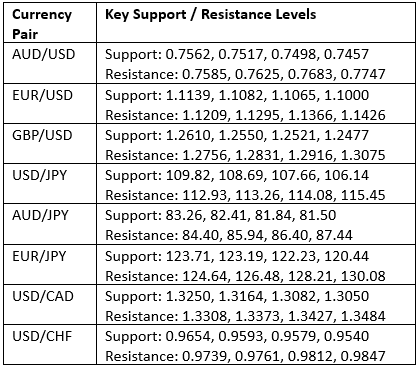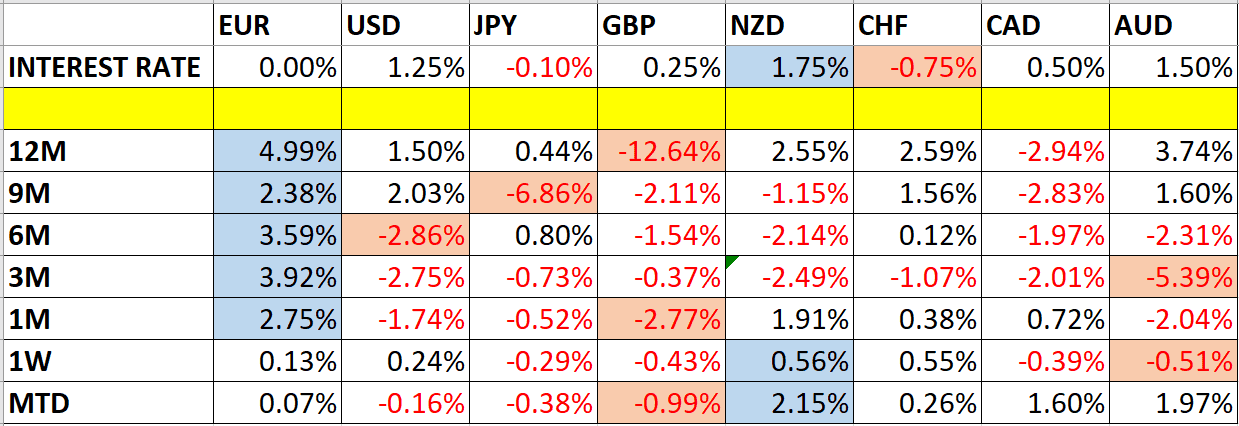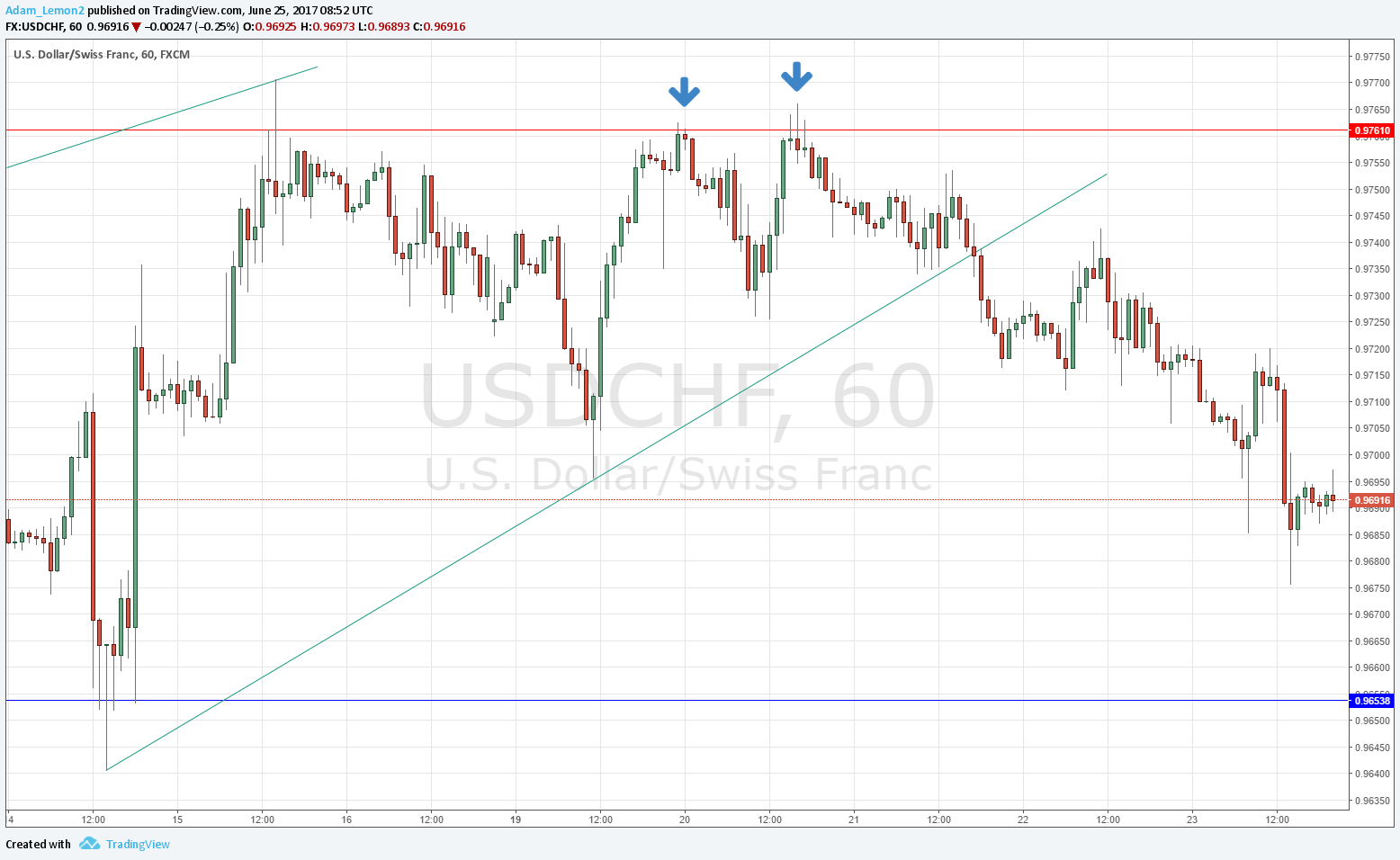This week we’ll begin with our monthly and weekly forecasts of the currency pairs worth watching. The first part of our forecast is based upon our research of the past 11 years of Forex prices, which show that the following methodologies have all produced profitable results:
· Trading the two currencies that are trending the most strongly over the past 3 months.
· Assuming that trends are usually ready to reverse after 12 months.
· Trading against very strong counter-trend movements by currency pairs made during the previous week.
· Buying currencies with high interest rates and selling currencies with low interest rates.
Let’s take a look at the relevant data of currency price changes and interest rates to date, which we compiled using a trade-weighted index of the major global currencies:
Monthly Forecast June 2017
This month, we forecasted that the highest-probability trade would be long EUR/USD. So far, the performance has been negative:
Weekly Forecast 25th June 2017
Last week, we forecasted that the CAD/CHF currency cross was likely to fall in value. It did so, by 0.90%.
This week, we make no forecast, as there were no strong counter-trend movements.
This week has been dominated by relative strength in the New Zealand Dollar and Swiss Franc, and relative weakness in the Australian Dollar and British Pound.
Volatility was extremely low, with less than 4% of the major and minor currency pairs changing in value by more than 1%. Volatility is likely to again be very low over this coming week, but probably not as low.
You can trade our forecasts in a real or demo Forex brokerage account.
Key Support/Resistance Levels for Popular Pairs
We teach that trades should be entered and exited at or very close to key support and resistance levels. There are certain key support and resistance levels that should be watched on the more popular currency pairs this week, which might result in either reversals or breakouts:
Let’s see how trading one of these key pairs last week off key support and resistance levels could have worked out:
USD/CHF
We had expected the level at 0.9761 might act as resistance, as it had acted previously as both support and resistance. Note how these “flipping” levels can work well. The H1 chart below shows the how the price initially hit this level at Monday’s New York close and formed a bearish inside candle during the subsequent Asian session, providing a possible short trade entry marked by the first down arrow in the chart below. This short trade would have given an excellent maximum reward to risk ratio of about 4 to 1 if profit had been taken optimally. There was then a second opportunity to go short later in the week, shown by the second down arrow in the chart and indicated by an outside candle followed by an inside candle which were both pin candles. The compound candlestick formation produced a more decisive bearish turn, which would be showing a still open reward to risk ratio greater than 5 to 1.
You can trade our forecasts in a real or demo Forex brokerage account to test the strategies and strengthen your self-confidence before investing real funds.



